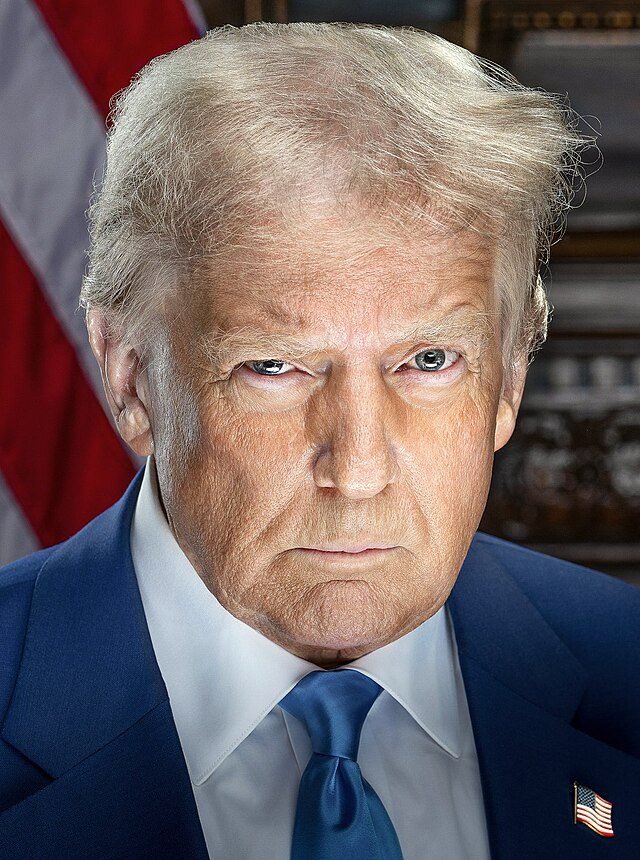
Summary of the Recent USAID Workforce Changes Under the Trump Administration
In a significant development characterized by administrative upheaval, the Trump administration has announced the dismissal of approximately 2,000 USAID (United States Agency for International Development) workers. This decision is a direct consequence of a recent judicial ruling that grants the president the authority to terminate these employees. The implications of this ruling and the subsequent firings are vast, affecting not only the agency’s operations but also the broader landscape of U.S. foreign aid and international relations.
Background on USAID and Its Role
USAID plays a crucial role in delivering humanitarian aid and promoting development initiatives across the globe. Founded in 1961, the agency is tasked with providing assistance to countries in need, supporting economic growth, and fostering democratic governance. The workforce at USAID consists of skilled professionals dedicated to various missions, including disaster relief, health programs, and economic development projects. The agency’s operations are vital for U.S. foreign policy and its image on the international stage.
The Judicial Ruling
The recent ruling by a judge has opened the door for the Trump administration to make sweeping changes within USAID. The specifics of the ruling, which was confirmed just a week prior to the announcement of the mass firings, indicate that the administration has the legal capability to dismiss employees, potentially as a means of reshaping the agency’s direction and focus. This legal backing raises concerns about the stability and continuity of the agency’s essential functions.
Impacts of the Firings
The decision to fire 2,000 workers is not merely a numbers game; it carries profound implications for the agency’s operations and its ability to fulfill its missions. The abrupt loss of such a significant portion of its workforce could lead to disruptions in ongoing projects, delays in aid distribution, and a potential decline in the quality of services provided to vulnerable populations around the world. The morale of remaining employees is likely to be affected, as job security becomes a pressing concern in the wake of these firings.
- YOU MAY ALSO LIKE TO WATCH THIS TRENDING STORY ON YOUTUBE. Waverly Hills Hospital's Horror Story: The Most Haunted Room 502
Moreover, the move is seen by many as a strategic play by the Trump administration to streamline operations and possibly shift the agency’s priorities. Critics argue that this could lead to a reduction in the effectiveness of U.S. foreign aid, as experienced personnel are replaced or removed from their roles.
Response from the Public and Stakeholders
The announcement has sparked a wave of reactions from various stakeholders, including humanitarian organizations, foreign governments, and the general public. Advocacy groups are expressing their concerns about the potential humanitarian impact of these firings, emphasizing that experienced professionals are crucial for navigating complex global challenges.
Furthermore, the public discourse surrounding this decision is heavily influenced by the political climate. Supporters of the Trump administration may view this as a necessary step toward reducing government size and increasing efficiency, while opponents argue that it undermines critical support systems for those in need and jeopardizes U.S. leadership in global humanitarian efforts.
Future of USAID and U.S. Foreign Aid
As the dust settles from this major workforce change, questions remain about the future trajectory of USAID and U.S. foreign aid. With a significant reduction in personnel, the agency may struggle to maintain its current commitments while also adapting to any new directives from the administration. The potential for a shift in focus towards different countries or types of aid could also reshape U.S. diplomatic relations, particularly in regions that rely heavily on American assistance.
Furthermore, the long-term effects of this decision could lead to a re-evaluation of how foreign aid is allocated and administered. Observers will be watching closely to see if this move leads to a broader trend of downsizing within government agencies or if it sparks a backlash that could prompt legislative action to protect the integrity of U.S. foreign aid programs.
Conclusion
The firing of 2,000 USAID workers by the Trump administration marks a pivotal moment in the agency’s history and U.S. foreign policy. With a legal ruling empowering the administration to make such sweeping changes, the future of USAID hangs in the balance. The impacts of these firings will be felt not only within the agency but also globally, as U.S. foreign aid programs and initiatives may face significant challenges moving forward.
As stakeholders rally to respond to this development, the dialogue surrounding the role of USAID and the importance of maintaining a robust workforce dedicated to humanitarian efforts will likely intensify. The coming months will be critical in determining how these changes will shape the landscape of international aid and the U.S.’s role as a global leader in promoting development and humanitarian assistance.
Key Takeaways
- The Trump administration is firing 2,000 USAID workers following a judge’s ruling.
- USAID’s role in international aid is crucial, and these firings could disrupt its missions.
- The public response is divided, reflecting broader political sentiments.
- Future implications for U.S. foreign aid and relations will be closely monitored.
This summary encapsulates the essential details of the recent changes at USAID and their potential ramifications, providing a comprehensive overview for those interested in U.S. foreign policy and humanitarian efforts.

BREAKING: The Trump admin is firing 2,000 USAID workers and putting thousands of others on leave after a judge ruled last week that he can fire them – AP pic.twitter.com/kdmUh9QO8s
— Libs of TikTok (@libsoftiktok) February 23, 2025
BREAKING: The Trump admin is firing 2,000 USAID workers and putting thousands of others on leave after a judge ruled last week that he can fire them
The recent decision by the Trump administration to terminate 2,000 USAID workers has stirred quite a conversation across various platforms. This move follows a judge’s ruling that essentially granted the administration more leeway in managing personnel. The implications of this decision are vast, not only for those directly affected but also for the overall functioning of USAID and its mission to assist in international development and humanitarian efforts.
The announcement, shared widely on social media platforms, has raised eyebrows and ignited debates about the future of U.S. foreign aid and the role of government workers in these initiatives. It’s a significant shake-up, and here’s why it matters.
The Background of USAID
The United States Agency for International Development (USAID) has been pivotal in promoting global development and delivering humanitarian assistance. From combating poverty to responding to disasters, USAID’s work is critical. With thousands of employees dedicated to these missions, the agency has a substantial impact on international relations and the lives of millions around the globe.
Now, with the potential firing of 2,000 workers and the suspension of thousands more, one has to wonder how this will affect ongoing projects and initiatives. The workforce at USAID is not just a number; it comprises dedicated professionals working tirelessly to improve conditions in some of the world’s most challenging environments.
Understanding the Ruling
The judge’s ruling that enabled this mass termination is not just a legal formality; it reflects broader themes in government employment practices. The ruling seems to give the Trump administration a significant degree of control over personnel decisions, allowing for rapid changes that could disrupt established programs.
This raises questions about job security for federal employees and the implications of such legal precedents. As the landscape of federal employment evolves, it’s crucial to consider how this might affect not just USAID but other government agencies as well.
The Reaction from the Public and Experts
Social media has exploded with reactions to this breaking news. Many individuals are expressing concern over the impact on essential services that USAID provides globally. Critics argue that firing such a large number of employees could hinder the effectiveness of U.S. aid, leading to dire consequences for those who rely on international assistance.
Experts in international relations and public policy have also weighed in, suggesting that this could weaken U.S. influence abroad. For instance, pulling out seasoned professionals might lead to a knowledge gap that hampers the agency’s ability to respond effectively to international crises. This sentiment resonates with those who understand the critical role that experienced personnel play in navigating complex international landscapes.
What’s Next for USAID?
With such a significant change looming, many are left wondering what the next steps will be for USAID. The agency’s leadership will need to quickly adapt to these changes, potentially reshuffling priorities and re-evaluating ongoing projects.
Furthermore, the morale of remaining employees could take a hit. Job security is a crucial element in maintaining a motivated workforce, and with thousands of layoffs and suspensions on the horizon, one can’t help but wonder how this will affect productivity and employee commitment to the agency’s mission.
This situation could also open the door for new appointments and a shift in agency direction. The Trump administration might take this opportunity to realign USAID’s priorities with its broader policy goals, potentially leading to a complete overhaul of how the agency operates.
The Broader Implications for Foreign Aid
The ripple effects of these firings will likely extend well beyond USAID itself. U.S. foreign aid plays a significant role in global stability and development, and any disruption to its operations could have far-reaching consequences. As a leading donor in international development, the U.S. has a responsibility to uphold its commitments globally.
Should the agency face operational challenges due to staffing shortages, it could lead to delays in aid delivery, impacting vulnerable populations worldwide. The long-term ramifications of this decision could include diminished trust in U.S. commitments to aid and assistance, which could have a lasting impact on international relations.
Engagement from the Political Sphere
Political leaders on both sides of the aisle have begun to voice their opinions about this development. Some view it as a necessary step to streamline government operations, while others see it as a reckless move that prioritizes political agendas over humanitarian needs.
The debate surrounding this issue is likely to intensify as more details emerge about the impacts of the firings. Advocates for foreign aid and international development may mobilize to push back against these changes, emphasizing the importance of a robust USAID workforce.
Final Thoughts on the Future of USAID
The decision to fire 2,000 USAID workers is a significant moment that raises many questions about the future of U.S. foreign aid and international development efforts. As we navigate these changes, it’s crucial to pay attention to how these developments unfold and what they mean for the agency, its employees, and the global community.
Whether this move will lead to a more efficient operation or result in detrimental consequences for U.S. foreign aid remains to be seen. One thing is clear: the impact of these decisions will resonate far beyond the walls of USAID, affecting countless lives across the globe.
For those interested in learning more about this unfolding situation, follow reputable news sources, including [Associated Press](https://apnews.com) and others that are closely monitoring the developments within USAID and the broader implications of these administrative changes.
By staying informed, we can better understand the nuances of these pivotal decisions and advocate for a U.S. foreign aid strategy that is effective, compassionate, and aligned with global needs.
